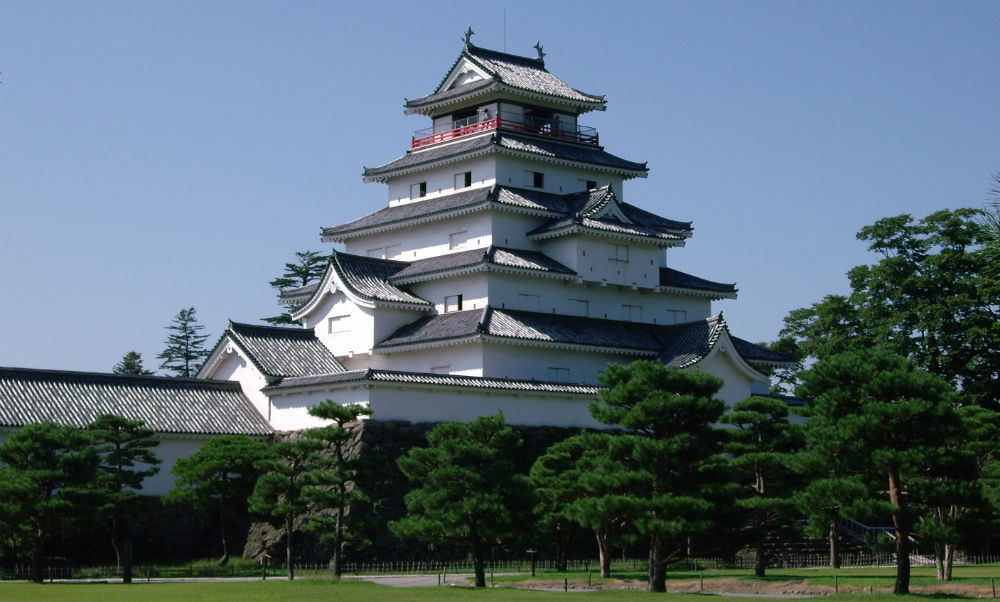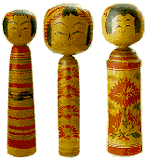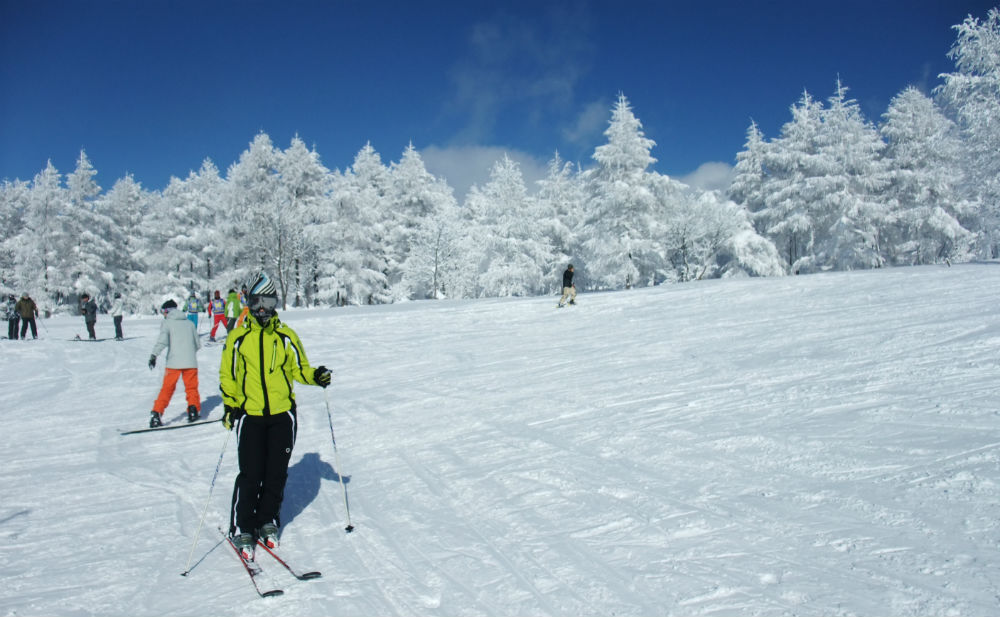Tohoku Region: Southern Tohoku
Tohoku Region: Northern Tohoku | Southern Tohoku
Southern Tohoku is a popular destination for sightseers and skiers from the Tokyo area. It has some of the country's most beautiful scenery as well as major festivals and many excellent ski and onsen (hot spring) resorts. Made up of Miyagi, Yamagata and Fukushima Prefectures, this largely mountainous area also has the famously scenic bay at Matsushima.

Tsuruga castle
Miyagi
The economic and cultural center of Tohoku is Sendai, the capital of Miyagi Prefecture. A modern city rebuilt after World War II, its main tourist draws are the Tanabata Festival, Osaki Hachiman shrine and Aoba Castle. Tanabata is one of the big festivals celebrated nationwide in Japan. The elaborate festivities held in Sendai on August 7 attract visitors from all over the country. Colorful paper decorations inscribed with people's wishes can be seen everywhere. It's based on a Chinese legend of two lovers, represented by the stars Vega and Altair, who could meet only once a year on the 7th day of the 7th lunar month. Over the centuries it has become mixed with the Bon festival and other native rituals. Aoba Castle was first built in 1601, but the present building is a modern reconstruction. The main onsen resorts near Sendai are Akiu and Sakunami Onsen.
Sendai is also a base for seeing Matsushima Bay, together with Itsukushima and Amanohasidate one of the Nihon Sankei, the three most famous views in Japan. The bay has some 260 small, pine-covered islands and has been a celebrated spot for centuries. The Zuiganji temple is a National Treasure said to have been built in 838 and the bay was eulogized by the famous 17th-century poet Matsuo Basho. Further north along the coast is Ojika Peninsula, which is very scenic. One of the islands off the peninsula is Kinkazan (Gold Flower Mountain) Island, which has a shrine to the god of gold and silver and is inhabited by wild monkeys and deer.

Northwest of Sendai, the town of Narugo is an onsen resort. It is known for its narugo-nuri lacquerware and as one of the homes of kokeshi doll-making. These simple wooden dolls have cylindrical bodies and a large head, usually painted with a girl's face. They originated as toys in the Edo Period (1600-1868) and are now popular collector's items as well as good, cheap souvenirs.
There are 10 different styles, depending on the towns where they are made. The three types shown on the left are (from left to right): Tsuchiyu, from Tsuchiyu Onsen, Fukushima Prefecture; Togatta, from Togatta Onsen, Miyagi Prefecture; and Narugo, from Narugo Onsen, Miyagi Prefecture.
Yamagata
Apart from having a dialect unintelligible (well, almost!) to the rest of the country, Yamagata doesn't attract much interest from sightseers. It is popular with skiers, however, and has some of the country's most popular ski resorts. Mt. Zao is also famous for its onsen and its winter landscape of ice-covered trees, which resemble crowds of snowmen or, as legend would have it, white monsters. It is also popular in autumn because of its colorful foliage. Dewa Sanzan (Three Mountains of Dewa) consists of Mt. Haguro, Mt. Gassan and Mt. Yudono. Popular with skiers, the mountains are also considered holy and worshipped by yamabushi, mountain ascetics who practice a form of shamanism. The town of Yonezawa in the south of the prefecture is known for its beef, a delicacy of the region, and various handicrafts and silk fabrics.

Zao ski resort
Fukushima
The main attractions in Fukushima are contained within the Bandai-Asahi National Park, which also runs through Yamagata and Niigata Prefectures. The area can be reached on the Bai-etsu-saisen Line which runs from the shinkansen (bullet train) stop at Koriyama west to Niigata. Mt. Bandai is a volcano which last erupted in 1888, blowing the top off the mountain and forming several lakes on its northern slopes. These include Goshiki-numa (Five-colored swamps), which are actually some 200 ponds and lakes, each a different shade of green or blue. The three larger lakes are Hibara, Onogawa and Akimoto. On the southern side of the mountain is Lake Inawashiro, popular with tourists year-round. When weather conditions are right, Mt. Bandai forms a beautiful backdrop to the lake. The home of the famous bacteriologist Noguchi Hideyo is on the north shore of the lake and is now a museum.
West of the lake is the 700-year old castle town of Aizu Wakamatsu. Its main tourist attractions are Wakamatsu Castle, also known as Tsuruga-jo (Crane Castle), and the historic hill Iimoriyama. Much of the city was destroyed during the Boshin Civil War in 1868 when defenders of the shogunate fought with those who wanted to restore the Emperor. A few hundred youths formed a group known as the Byakkotai (White Tiger Brigade) but were easily defeated by Imperial troops. Twenty survivors returned to Wakamatsu Castle but found it in flames. Having failed, they committed suicide on the nearby hill and there is a monument next to their 20 gravestones. Their actions are considered a symbol of loyalty and courage.
The city also contains several interesting museums of folklore and sake (rice wine) brewing. Souvenirs include aizu-nuri lacquerware, aizu cotton and akabeko, red papier-mache cows with bobbing heads. The most popular onsen resorts in the area include Higashiyama, Bandai-Atami and Tsuchiyu.
There is no avoiding, in any guide to Fukushima, mentioning the terrible events of March 2011, when a massive earthquake and tsunami caused a nuclear disaster at the Fukushima Daiichi power plant. The resulting radiation fallout led to the creation of an exclusion zone that includes half a dozen towns near the plant. Some 50,000 people moved from the area continue to live as evacuees.
Related content
- See our page on the official websites for each prefecture and major city: Guide to Japan's Regions and Cities
